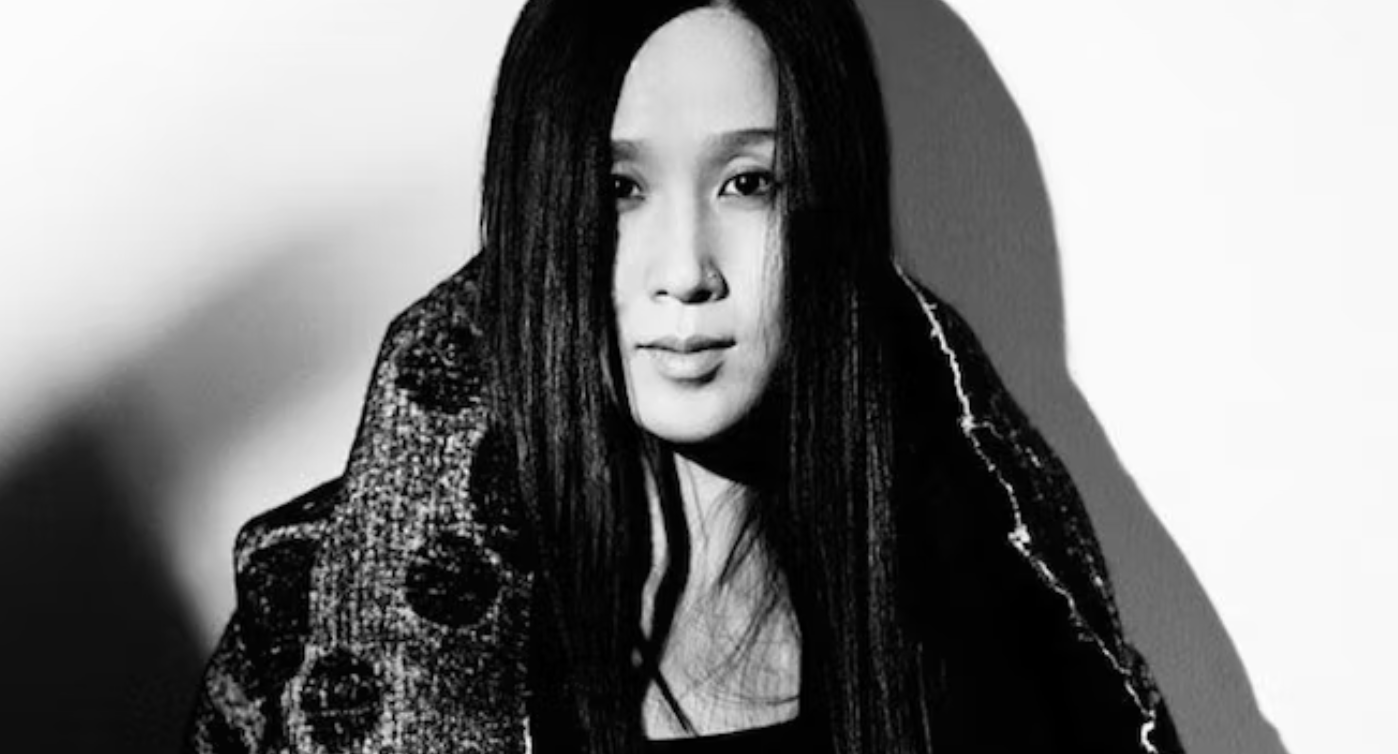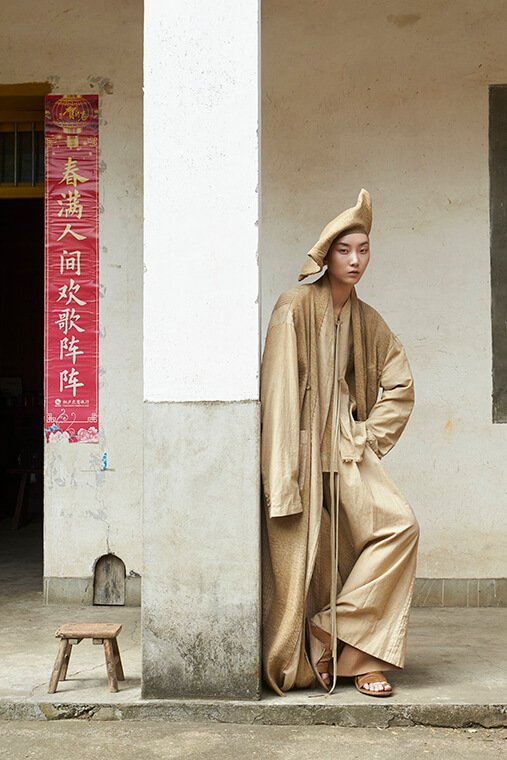Into Uma Wang’s Luxury from the Earth
A sip of wine in front of the Amazon forest. That’s what Uma Wang’s designs felt like while I was researching her work – quiet, but rich. Amidst luxuriously draped silhouettes was the fresh feeling of dew after rain. “I want the visitor to feel the smell of the wet soil and the excitement of a growing plant,” Uma Wang told WWD about her recent Spring-Summer 2023 collection for the coming year. Inspired by a recent visit to North Africa, Wang takes nature back to its roots with natural fabrics like silk and linen, paired with texture from distress and fray. In one look, the texture mimics tree bark. In another, its neutrals convey desert and earth. A sheer nylon described a white cloud.
Seldom do I see a collection that manages to tie in such deeply-rooted and eternal themes like culture, history, and nature – and at that, a collection that relies on maturity and not trend. As a designer that likes to incorporate her heritage, the collection featured Ming Dynasty-inspired square-toe shoes, customary footwear of the time. 80s-esque coats, jackets, and sleeves served as an intermediary between the past and the present. “A Gaze Into Wilderness,” she titled the collection.
(“A Gaze Into Wilderness,” Uma Wang SS23. Photos: Alessandro Tinelli / Courtesy of Uma Wang)
Born Wang Zhi in Hebei, China, Wang has claimed many firsts. She was the first Chinese designer on the European fashion calendar, and established one of China’s first global labels. The sphere of Chinese designers on the global stage has definitely expanded since Wang started her eponymous brand in 2009, and she expressed her take to Luxe.Co on this turning point. “I feel that it has finally been our turn for so many years. The world is watching what Chinese designers are doing. Why don’t we grasp this opportunity, whether it is failure or success?”
(Photo via The Business of Fashion)
In addition to showcases in London, Paris, and Milan’s fashion weeks, she regularly emblazes her brand at Shanghai fashion week. After positive public response catalyzed her career, Wang was one of the first Asian designers in international fashion as a whole. Her mature design philosophy and expertise in fabrics (echoing her study of textiles in Shanghai and London) has garnered her critical acclaim from industry insiders and fans worldwide—of which includes me, as I’ll be keen to see how she continues to manipulate textures and pre-existing aesthetics.
What I noticed about Wang’s designs that highlighted her from other designers was her ability to tie contemporary work to ritual. Subtle hints to Chinese tradition and grounding themes like culture and nature doesn’t dilute the designs, but makes them all the more rich with life. Wang’s SS20 collection, inspired by the ruins of Pompeii, solidified my interpretation of her clothing. “I didn’t deliberately look for themes–most of my work reflects true emotions and feelings I’ve experienced,” she told Jing Daily after the collection. Wang even looked to the Incan period as inspiration for Fall 2019.
(Uma Wang campaign. Photos: Francesco Brigida)
Wang’s attention to detail manifests not only in her design philosophy, but in her business as well. She mentioned in the same interview that “in the long run, I’m not planning to sell the brand or sell shares. I want to maintain its current scale; it is intimate and beautiful.” She is deliberately passive in commercializing the brand, and implements intricacies to buyers with the utmost care–even going so far as to have her father write the origin and date on the clothing’s tags in traditional Chinese.
And so looking through Wang’s current Fall 2022 Ready-To-Wear collection, it made sense why she decided to go in the direction she did for 2023. It felt like a precursor to Spring 2023, with simultaneous bohemian- and businesswear-based looks. Even in this collection was Wang experimenting with comfort and elegance as concurrent themes — everything down to the creases of the fabric and the flow off the figure was refined to a T in this masterfully created collection.
(Uma Wang FW22)
Because of all this, it makes sense why Uma Wang’s designs were well-received, especially in the early 2000s and with the establishing of a new generation of Chinese fashion designers like Yiqing Yin, Jason Wu, Alexander Wang, and recent fashion superstar Dingyun Zhang – just to name a few. She continues to be one of such designers that leave a footprint on the current state of fashion. Wang said about her brand’s aesthetic that “the world is getting smaller, and I’m more confident about the innate beauty in this kind of aesthetic.” She continued, “I think it’s a common misconception that China only has factories and not designers. Over the years, this has changed a lot.
(Uma Wang campaign. Photo: Francesco Brigida)
“Today, young designers are coming back to China after studying or working abroad, and it’s making China a more dynamic place than ever.”
by ELAINA ZI




